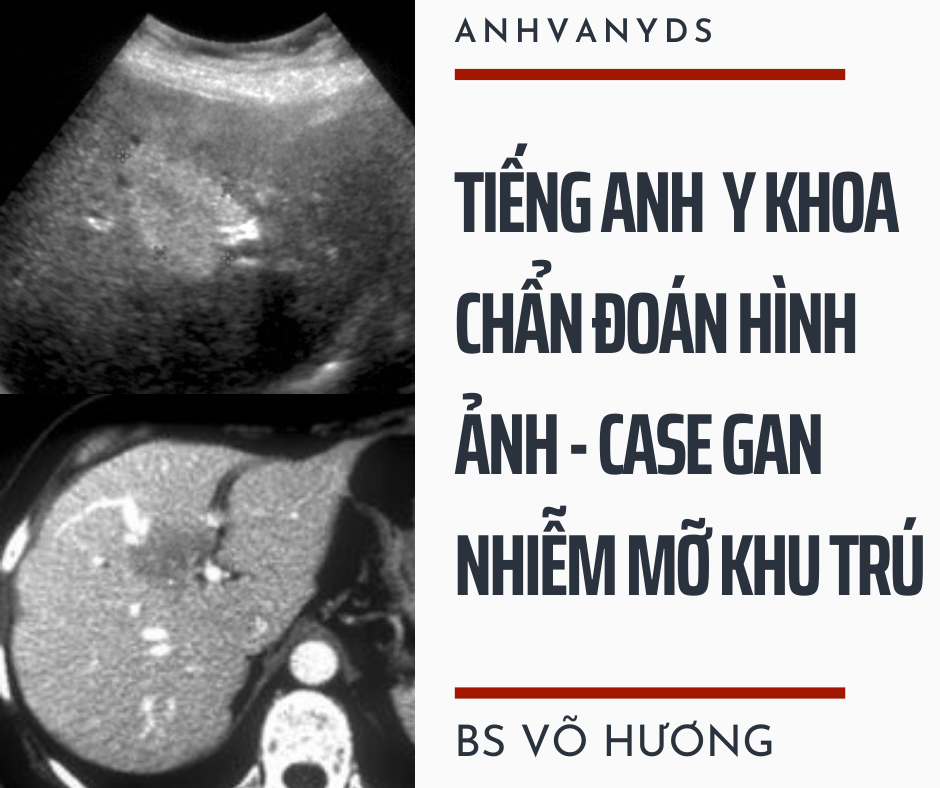
CASE 1:
-
Presentation
Screening US (ultrasound)
2. Patient Data
AGE: 65
GENDER: Male
3. Tổn thương
A circumscribed area of increased echogenicity is visible in the liver, immediately anterior to the porta hepatis (segment IV).
The abnormality can be better appreciated on the cine recording.
6 month earlier exam
The abnormality is essentially unchanged compared to the prior exam.
4. Case Discussion
Segment IV, immediately adjacent to the porta hepatis is the most common location for focal hepatic steatosis.
The ventral aspect of segment IV bordering the falciform ligament is another typical location, and commonly seen with cross-sectional imaging, but only occasionally with US. The likely explanation is that the superficial regions fall into the near field of convex transducers, where contrast resolution is significantly worse.
Focal fatty deposits showing the characteristic appearance and location can be followed with US, whilst for lesions showing atypical location or mass-like appearance, further evaluation with contrast-enhanced US is often warranted. CEUS can rule out malignancy with a specificity on par with cross-sectional imaging, is more cost-effective than MRI, and uses no ionizing radiation.
5. Link tham khảo: https://radiopaedia.org/cases/focal-hepatic-steatosis-2?lang=us
CASE 2:
1. Presentation
Incidental finding on imaging.
2. Tổn thương:
CT demonstrates the presence of a low attenuation geographic lesion, with vessels coursing through without displacement.
3. Case Discussion
Focal hepatic steatosis is often recognized by:
- Location: peri-ligamentous, peri-portal
- Distribution of lesions
- Presence of non-distorted, traversing blood vessels
Despite this, patchy focal fat deposition and relative fatty sparing may be mistaken for a focal neoplasm (particular at US and CT) and thus MR in-phase and opposed-phase imaging allows reliable differentiation
4. Link tham khảo: https://radiopaedia.org/cases/focal-hepatic-steatosis?lang=us
CASE 3
-
Presentation
Right hypochondrial pain and dyspepsia. The patient is diabetic on oral drugs.
2. Patient Data
AGE: 40 years old
GENDER: Female
3. Tổn thương:
A lobulated geographic hypodense area is seen occupying most of the right lobe and the medial segment of left lobe with the blood vessels seen traversing this focal lesion without interruption. This lesion becomes less distinct in delayed images. No mass effect could be detected.
4. Link tham khảo: https://radiopaedia.org/cases/focal-hepatic-steatosis-1?lang=us
CASE 4:
1. Presentation
Screening US.
2. Patient Data
AGE: 60 years
GENDER: Male
3. Tổn thương:
A circumscribed area of geographic hyperechogenicity is visible near the porta hepatis – a fairly typical location for focal hepatic steatosis. A hepatic vein is traversing through this area uninterrupted, which is highly suggestive of fatty infiltration and is a strong indicator of non-mass like behavior.
4. Case Discussion
Absent vessel distortion is an important feature focal fatty infiltration and a benign behavior in general.
5. Link tham khảo: https://radiopaedia.org/cases/focal-hepatic-steatosis-absent-vessel-distortion?lang=us
BS VÕ HƯƠNG – ANHVANYDS
Để lại một phản hồi Hủy